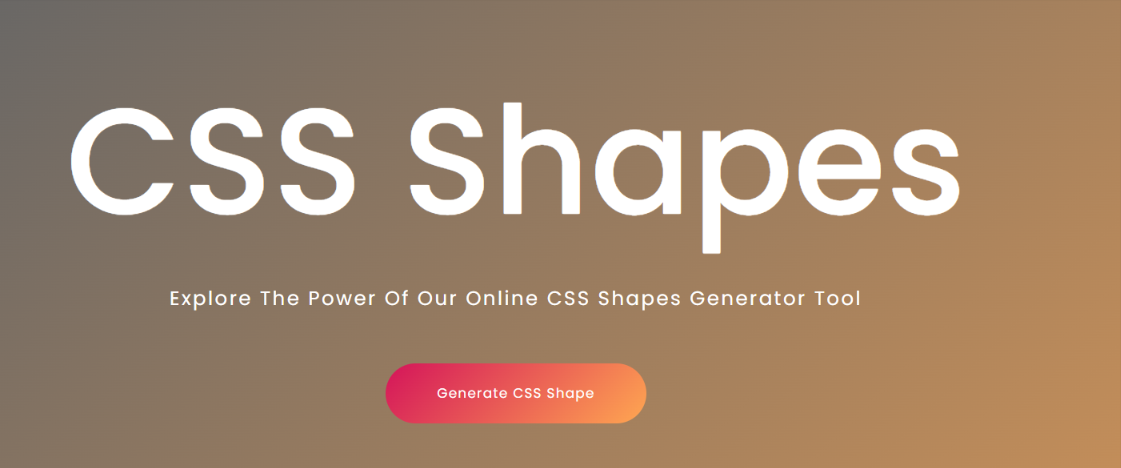CSS (Cascading Style Sheets) has revolutionized the way web designers create layouts and styles for web pages. Among the various features CSS offers, CSS Shapes have emerged as a powerful tool for creating visually appealing and innovative designs. In this article, we’ll delve into the world of CSS Shapes Generator, exploring its significance, usage, benefits, and much more.
Introduction to CSS Shapes
CSS Shapes allow web designers to define geometric shapes, such as circles, ellipses, polygons, and more, which text and other elements can flow around. Unlike traditional rectangular layouts, CSS Shapes offer flexibility and creativity in designing web layouts, making content more engaging and dynamic.
What is a CSS Shapes Generator?
A CSS Shapes Generator is a tool that simplifies the process of creating complex shapes using CSS. It provides an intuitive interface where designers can visually manipulate shapes, adjust parameters, and generate the corresponding CSS code instantly. Essentially, it streamlines the design workflow and eliminates the need for manual coding, saving time and effort.
Importance of CSS Shapes in Web Design
CSS Shapes play a crucial role in enhancing the visual appeal and user experience of websites. By breaking away from the constraints of rectangular elements, designers can create more fluid and organic layouts that better complement the content. This leads to a more immersive and engaging browsing experience for users, ultimately improving retention and conversion rates.
How to Use a CSS Shapes Generator?
Understanding the Basics
Before diving into a CSS Shapes Generator, it’s essential to have a basic understanding of CSS and how shapes are defined using CSS properties such as shape-outside, shape-margin, and shape-image-threshold.
Choosing the Desired Shape
Once familiar with the fundamentals, users can choose from a variety of pre-defined shapes or create custom shapes using intuitive tools like bezier curves or SVG paths.
Customizing the Shape
After selecting a shape, designers can fine-tune its size, position, and other attributes to fit seamlessly within their design layout. The live preview feature allows for instant feedback, ensuring optimal results.
Benefits of Using a CSS Shapes Generator
- Efficiency: Eliminates the need for manual coding, saving time and effort.
- Flexibility: Enables designers to create intricate shapes with ease, enhancing creativity.
- Accessibility: Improves readability by shaping text around non-rectangular elements, catering to diverse user needs.
Examples of CSS Shapes in Web Design
From magazine-style layouts to interactive infographics, CSS Shapes are employed in various design contexts to create stunning visual effects and improve user engagement. Examples include text wrapping around images, custom-shaped buttons, and decorative elements like speech bubbles and callouts.
Tips for Implementing CSS Shapes Effectively
- Keep it Simple: Avoid overly complex shapes that may distract from the content.
- Test Across Devices: Ensure compatibility and responsiveness across different screen sizes and devices.
- Combine with Other Techniques: Experiment with CSS Grid, Flexbox, and animations to create dynamic layouts.
CSS Shapes vs. Traditional Box Model
While the traditional box model serves its purpose for many design scenarios, CSS Shapes offer a more dynamic and creative approach to layout design. By allowing content to flow around custom shapes, CSS Shapes break away from the rigid rectangular structure, opening up new possibilities for designers.
Common Mistakes to Avoid When Using CSS Shapes
- Overlapping Content: Ensure sufficient space between shapes and content to maintain readability.
- Neglecting Browser Support: Check compatibility with older browsers and consider fallback options for unsupported features.
- Ignoring Performance Impact: Complex shapes and large images may affect page load times, so optimize where possible.
Future Trends in CSS Shapes
As web design trends continue to evolve, CSS Shapes are expected to play an increasingly prominent role in shaping the visual landscape of the web. With advancements in browser support and the adoption of new CSS features, designers can look forward to even more innovative possibilities in layout design.
Conclusion
In conclusion, CSS Shapes Generator empowers designers to unleash their creativity and elevate the aesthetics of web design. By leveraging the flexibility and versatility of CSS Shapes, designers can create immersive and engaging user experiences that captivate audiences and drive results.

